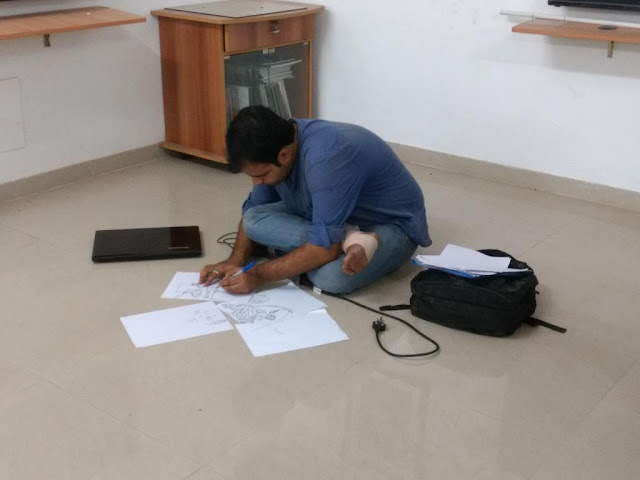“Curation As Praxis” is a two week intensive workshop being held at the Art History department, Faculty of Fine Arts, MSU. The workshop is being coordinated by Mr. Rahul Bhattacharya.
The first module focused on exploring the tentative dissertation topics of the Second Year Masters students, which became the foundation of their curatorial proposals. The emphasis was on generating a body of curatorial texts, which would become the frameworks for the final exhibition. Simultanously, the students were introduced to the theoretical aspects of curation, the various types of curation and their relevant methodologies.
The second module (currently ongoing) focuses on the practical aspects of curation. The students are engaged in designing and building a display that will culminate into a group show. At the commencement of the second module, the students exchanged their curatorial materials, with the notion that the display would benefit from a fresh and objective pair of eyes. Each curator will bring their own approach to dealing with the research material and curatorial obstacles, to create a visual representation of the idea.
The titles of the displays are:
The final exhibition, titled “Curation As Praxis: Dialogue, Identity, and Movement” will be held on the 20th and 21st February 2017 at the Faculty of Fine Arts exhibition hall.































